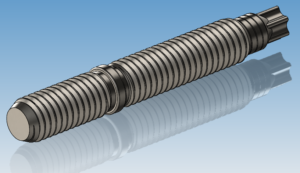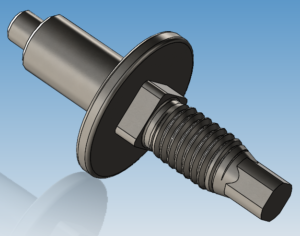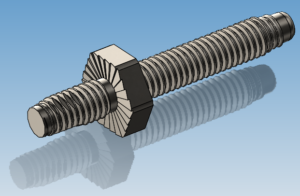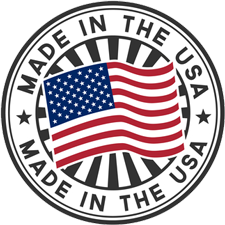What are Studs (the Fastening Kind)?
In short, a stud is a threaded rod or bar. They resemble screws and bolts, except that they do not (typically) have heads. Generally, fastening studs are permanent fixtures that can work with or without nuts, although they often involve the use of a nut. They are often welded, swaged or bonded to attach. If welded, they may have a small head to make this feasible.
Standard Stud Features vs Bolts and Screws
However, the lack of head is the most unique feature of a stud, but there are other features that are often true of studs vs. bolts or screws.

Studs are often larger than bolts and screws. Used in assembling heavy machinery and materials such as turbines or tanks, studs can be manually installed because they do not require external force to be torqued down.
Bolts and screws have rotational force applied to them along with linear force. Studs, on the other hand, do not have a rotational force applied. Studs do not have stretching on their threads and can produce a repeatable clamping force. As a result, they last longer.

Different Types of Studs
Studs can be fully threaded or have threads on one end with an unthreaded end, or they may be double-ended and threaded on both sides of an unthreaded center.
Among the different types of studs are:
- Fully-Threaded Studs (These do not typically have a chamfered end)
- Tap-End Studs (These have unequal length threads on either end of a non-threaded center. There is typically a tap end and nut end. The tap end may have some kind of point.
- Double-End Studs (Studs with equal length threads on either end of the non-threaded center. One or both ends attach with a nut.)

Double-End Stud - Flange Studs (These fully-threaded studs have chamfered ends used in flange connections)
- Welding Studs (These have single-sided threads that pair with a nut. The unthreaded side is welded into place)
Need a stud manufactured? Contact us today and send us a request for a quote.


